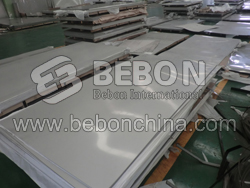Type 304L Stainless Steel Processing and Welding
The difference between 304 and 304L stainless steel is that 304L has 0.03 max carbon and is good for welding whereas 304 has a mid range level of carbon. 304 and 304L are austenitic alloys, which means that a nonmagnetic solid solution of ferric carbide or carbon in iron is used in giving this stainless steel its corrosion-resistant properties.

Corrosion:
Types 304 and 304L provides corrosion resistance in a wide range of moderately oxidizing and reducing conditions, fresh water and non-marine applications.
Below is the detail of Type 304L stainless steel processing and welding.
Processing:
Types 304L cannot be hardened by thermal treatment. Annealing: Heat to 1850° F to 2050 ° F and cool at sufficiently high rates through 1500°F to 800°F to avoid precipitation of chromium carbides. Stress Relief Annealing: Cold worked parts should be stress relieved at 750°F for ½ to 2 hours.
Forming:
Annealed Type 304L can be fabricated by roll forming, deep drawing, bending and most other fabrication techniques. Due to the high work hardening rate of these materials, intermediate anneals maybe required to successfully fabricate the part.
Welding:
Types 304L plates are weldable by most fusion or resistance welding techniques. If filler metal is required, Type 308 is normally used. Type 304L should be used in heavier sections to reduce the occurrence of carbide precipitation in the heat affected region adjacent to the weld pool
Typical Applications:
Chemical equipment and piping, heat exchanger components, dairy and food handling equipment and utensils, cryogenic vessels and components, architectural and structural applications exposed to non-marine .
